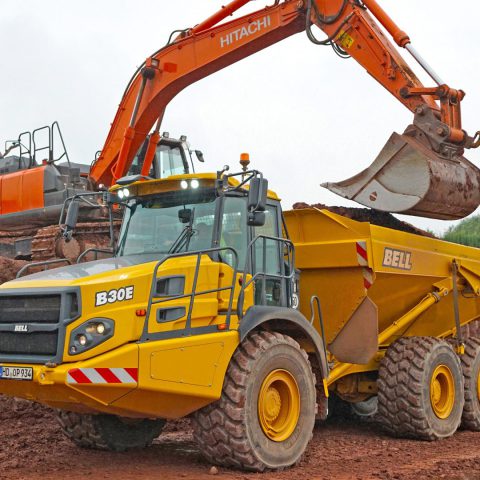Bell Equipment at bauma 2022
Bell Equipment will attend bauma 2022 with two important innovations: the B30E with a working width of under 3 meters and the new optimized version of the successful B45E 4x4, with Mercedes Stage V engines and Allison transmission.

Bell Equipment is one of the leading names in the articulated dumper industry. The range of the South African manufacturer is in fact one of the most complete. Both from the point of view of the operating weights and from that of the versions. Currently there are 7 models with 6 × 6 transmission and capacities up to 45,400 kg. Not to mention, in parallel, the 4 × 4 models, always articulated, which now have 3 models with capacities up to 55,000 kg.
At bauma, the manufacturer will present itself in the name of operational efficiency with ad hoc solutions for containing costs and increasing operational versatility.
B30E “narrow” and B45E 4 × 4 on the Bell Equipment shields
It will therefore be possible to see the B30E with a width of less than three meters and the B45E 4 × 4 in its updated version with a Stage V engine and several updates compared to the first version presented in 2019.
The two vehicles are designed to face two different types of applications but always with the spirit of maximum efficiency. The N version B30E (N stands for narrow) has been designed to meet those who have to move the dumper frequently and without excessive bureaucratic tasks. The B45E, on the other hand, is particularly aimed at quarries and aggregate plants with spaces where the ease of handling and agility of this solution is rewarding. But where management costs must be kept to a minimum compared to similar 6 × 6 models.
The transmission uses a 6-cylinder Mercedes Benz engine with a maximum torque of 1,450 Nm which drives the Allison Transmission XFE 3400 ORS automatic transmission with six gears. The gear change takes place through the management of the optimum travel speed.
Bell Equipment unveiled its B45E in 2019 and has enjoyed increasing market success ever since. This success has therefore led to various inputs from users. The transition to the Stage V engine was therefore an opportunity to make all those suggested improvements.










